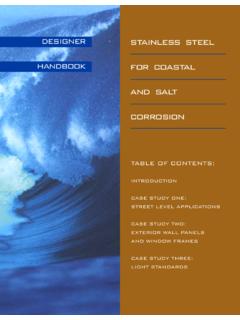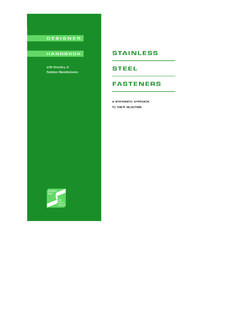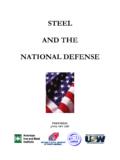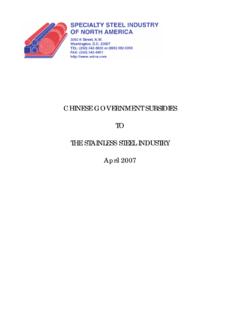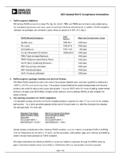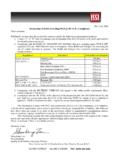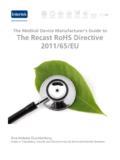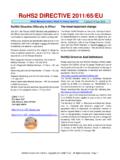Transcription of Stainless Steel and the European Union …
1 3050 K Street, Washington, DC 20007 Telephone: (202) 342- 8630 Fax: (202) 342- 8451 Toll- Free: (800) 982- 0355 Stainless Steel and the European Union Restrictions on Hazardous Substances (RoHS) Directive Hexavalent Chromium Is Not Present In Stainless and Specialty Steels Stainless steels are iron-based alloys that contain a minimum of approximately 11% chromium by weight. It is this addition of chromium that gives Stainless Steel its unique corrosion resistant properties through the formation of an invisible and adherent chromium-rich oxide surface film. The vast majority of chromium in Stainless and other specialty steels is in the metallic/elemental form (zero valence state). A small amount of trivalent chromium (oxide) is formed on the surface of specialty steels and is crucial for protecting the alloy from corrosion.
2 Hexavalent chromium, which is associated with certain adverse health effects, is not present in or on Stainless or other specialty steels. In addition, lead, mercury, cadmium, polybrominated biphenyl (PBB), and polybrominated diphenyl ether (PBDE) are not purposefully added in the Stainless Steel manufacturing process. Based on knowledge of raw materials, additives, process chemistry and available industry-wide data, Stainless Steel products do not contain measurable levels of mercury, cadmium, PBB, or PBDE (or hexavalent chromium, as noted above). Naturally occurring substances, such as lead and possibly cadmium, may be present at trace levels, due to impurities in raw materials. These trace levels are well below the maximum concentration thresholds specified in the EU RoHS Directives ( for lead, hexavalent chromium, and mercury; for cadmium).
3 Accordingly, Stainless and specialty steels are in conformance with the requirements of the European Union s legislation on waste electrical and electronic equipment ( WEEE ; Directive 2002/96/EC) and its companion directive on the restriction on hazardous substances used in EEE ( ROHS - Directive 2002/95/EC; and ROHS II - Directive 2011/65/EU), as well as EU Directive 2000/53/EC on End-of-Life Vehicles, and the Japanese Green Procurement Initiative.

